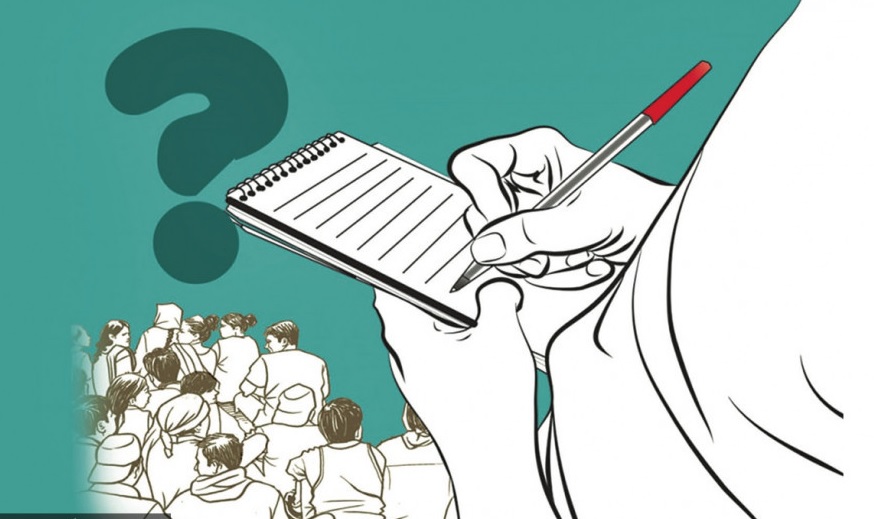
April 12, 2023
Kathmandu
The study conducted by Dignity Initiative–an organisation working on knowledge production on the issues of social exclusion and human rights with a special focus on Dalit, has shown a grim picture of inclusiveness in the federal parliament, provincial assemblies and local units.
The Dignity Initiative unveiled the study report in Kathmandu on Tuesday.
Speakers commenting on the study report presented by researcher JB Bishwokarma said structural changes were needed to ensure better representation of Dalits and other marginalised groups in state apparatus.
Political analyst Tula Narayan Shah, who moderated the function, said the structural changes made after the second Constituent Assembly have significantly decreased the representation of Dalits and other marginalised groups.
The 60:40 ratio of Proportional Representatives versus First Past The Post election system was reversed through the new constitution besides including the Khas-Arya cluster in the proportional representation list significantly increased the representation of the Khas-Arya group but diminished the chances of Dalits and other disadvantaged groups.
“This example shows how a small structural change in policy significantly affects the representation of certain groups of the society,” said Shah.
The provision of the Khas-Arya cluster in the proportional representation system has affected the political parties formed for ensuring the rights of various groups as they were forced to prioritise Khas-Arya groups over others in their PR lists.
“The Nagarik Unmukti Party, which was formed for furthering the cause of the Tharu community could include a Tharu in its PR list only after the Khas-Arya’s quota was fulfilled,” said JB Bishwokarma, the researcher who conducted the study. “This must be changed.”
Bishwokarma, who chairs the Dignity Initiative, said the existing legal provision regarding the elections must be changed as it allocates the highest number of seats to the community that wins most of the seats under the FPTP system.
“The PR system was introduced to ensure proper representation of disadvantaged groups like Dalits who cannot make it to policy-making bodies, but dominant groups have continued to take advantage of the PR system,” said Bishworkarma. “Therefore the existing election laws cannot ensure inclusion of those who need it the most.”
According to the study, in the 275-strong House of Representatives, 47.27 percent members are Khas-Arya, 24 percent are from indigenous nationalities and only 4.82 percent are Dalits.
Just one Dalit candidate (which is 0.6 percent of the 165 FPTP seats) was elected to the House of Representatives under the FPTP system while 57.58 pc were elected from Khas-Arya and 21.21 pc from indigenous nationalities.
Only 5.64 per cent of Dalits managed to make it to the 550-strong seven provincial assemblies where 42.73 pc are from Khas Arya and 27.09 pc represents indigenous nationalities.
Among the total 31 Dalits elected to the provincial assemblies, only three were elected under the FPTP system.
Compared to the federal parliament and provincial assemblies, local units have the highest Dalit representation thanks to the legal provision that made the representation of a Dalit women ward member mandatory at all wards.
The share of Dalit representation in local units is 16.32 percent while the same is 35.4 percent for Khas Arya, but the representation of Dalits in executive positions–mayor/chair and deputy mayor/vice-chair and ward chairs is negligible.
Dalit’s representation in mayor/chair positions is just 1.06 per cent, 1.73 pc in deputy mayor/vice-chair positions and 2.18 pc in ward chair positions.
Not only in the state bodies, the representation of Dalits and marginalised groups is poor in the central committees of political parties that drive the country.
In the 148-member central executive committee of the Nepali Congress, the largest party in the House of Representatives, only 7.43 percent are Dalits.
Meanwhile, in the UML, the second largest party, only 6.64 percent of its 301-member central committee are Dalits. The CPN (Maoist Centre), the third largest party, has 9.74 percent Dalits in its 236-member central committee compared to 5.07 percent of the CPN (Unified Socialist)’s 335-member central committee and the Rastriya Swatantra Party’s 40-member central committee, which has 7.5 percent Dalits.
Even the parties that claim to champion inclusiveness have a paltry representation of Dalits.
Janata Samajbadi Party has 4.26 percent Dalits in its 446-member central committee and Loktantrik Samajbadi Party 4.65 percent in its 215-strong central committee.
One of the major roadblocks towards ensuring inclusion is the lack of a perspective and ideological basis in the political parties, says researcher Bishwokarma.
Party leaders, however, say discussions are going on to make necessary changes in the existing election laws.
“We have been discussing whether to make the elections fully PR or fully FPTP and ways to make it more inclusive,” Binda Pandey, standing committee member of UML, said at the function.
Pandey also pointed out that there should be discussions on whom to send to policy-making bodies on the PR quota–whether that should be the activists, or anyone from the communities.
“The problem with PR representatives was–most of them happened to be those who obeyed their leaders without complaint,” Pandey said. “This is not what we had imagined and it doesn’t serve the spirit of inclusiveness.”
Experts demand amendment to election laws to ensure inclusiveness as envisioned by the constitution.
https://kathmandupost.com/national/2023/04/12/inclusion-of-dalits-disadvantaged-groups-still-negligible